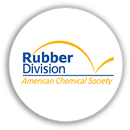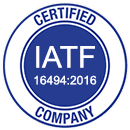ASTM D1646: Standard Test Methods for Rubber – Viscosity, Stress Relaxation, and Pre-Vulcanization Characteristics (Mooney Viscometer)
ASTM D1646 is a standardized test method developed by ASTM International to determine the viscosity, stress relaxation, and pre-vulcanization properties of raw rubber, compounded rubber, and elastomers. The test is conducted using a Mooney viscometer, which provides critical data on how rubber materials behave before the vulcanization process.
This test is essential for manufacturers and quality control labs to ensure consistent processing, performance, and quality of rubber compounds used in automotive, industrial, and consumer applications.
Purpose and Importance of ASTM D1646
The ASTM D1646 test method is used to:
- Measure Rubber Viscosity: Determines the flow characteristics of rubber compounds, affecting processing and extrusion.
- Analyze Stress Relaxation: Evaluates how rubber materials recover after being deformed, impacting elasticity and durability.
- Assess Pre-Vulcanization Properties: Helps manufacturers predict how rubber will behave before and during curing.
- Ensure Batch Consistency: Maintains uniform rubber properties across different production batches.
- Optimize Compound Formulation: Guides engineers in selecting the right rubber mix for specific applications.
Key Test Procedures in ASTM D1646
ASTM D1646 uses a Mooney viscometer, an instrument that applies rotational shear force to a rubber sample at controlled temperatures. The key testing steps include:
1. Sample Preparation
- A rubber specimen is prepared according to ASTM D1646 specifications.
- The sample is conditioned at a specific temperature before testing to remove moisture or inconsistencies.
2. Mooney Viscosity Measurement
- The rubber sample is placed in a Mooney viscometer chamber.
- A rotor applies a constant shearing force while the chamber maintains a set temperature (typically 100°C).
- The Mooney viscosity value (ML) is recorded, indicating the flow resistance of the rubber.
3. Stress Relaxation Test
- The Mooney viscometer measures how quickly the rubber’s stress decreases after the rotor stops rotating.
- This data provides insights into the rubber’s elastic recovery and processing stability.
4. Pre-Vulcanization Characterization
- A time-dependent viscosity increase is measured to detect premature vulcanization (scorching).
- This test helps determine the safe processing time before rubber curing begins.
Interpreting ASTM D1646 Test Results
The Mooney viscosity test provides several important values:
Factors Influencing ASTM D1646 Test Results
Several factors affect rubber viscosity and stress relaxation:
- Polymer Type: Natural rubber vs. synthetic rubber (SBR, NBR, EPDM) behaves differently.
- Filler Content: Carbon black and silica fillers increase viscosity and affect processing.
- Plasticizers & Oils: Modify viscosity, making rubber softer or more processable.
- Temperature & Mixing Conditions: Higher temperatures can accelerate vulcanization, impacting Mooney values.
Applications of ASTM D1646
ASTM D1646 is widely used in industries where rubber processing and quality control are critical:
- Automotive Industry: Ensures rubber compounds for tires, seals, gaskets, and hoses meet processing and durability requirements.
- Industrial Rubber Manufacturing: Helps in producing belts, conveyor systems, and vibration dampeners.
- Consumer Goods: Used in rubber gloves, footwear, and sporting goods.
- Aerospace & Defense: Ensures high-performance rubber compounds meet stringent quality standards.
Benefits of ASTM D1646 Compliance
- Improves Material Consistency: Helps maintain uniform rubber compound properties.
- Enhances Processability: Ensures optimal flow behavior for extrusion, molding, and calendering.
- Reduces Production Waste: Prevents scorching and curing issues that lead to defective products.
- Supports Regulatory Compliance: Meets automotive, aerospace, and industrial rubber standards.
Challenges in ASTM D1646 Testing
- Equipment Calibration: Requires precise temperature and rotor speed control.
- Sample Preparation: Inconsistent mixing or contamination can affect test results.
- Rubber Aging: Older rubber samples may exhibit higher viscosity and slower relaxation.








